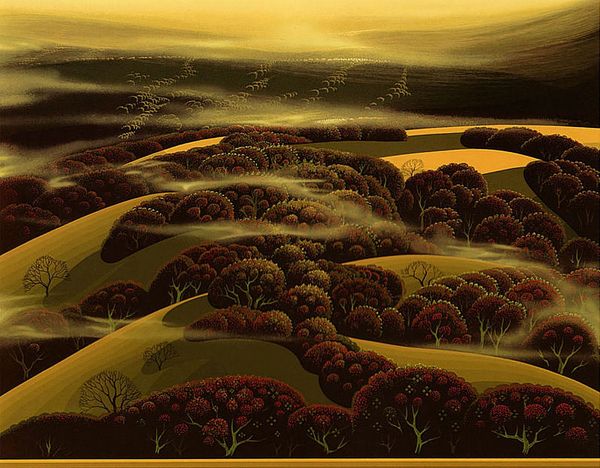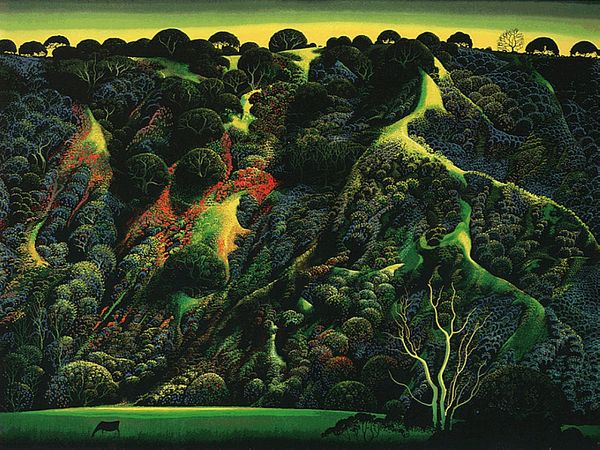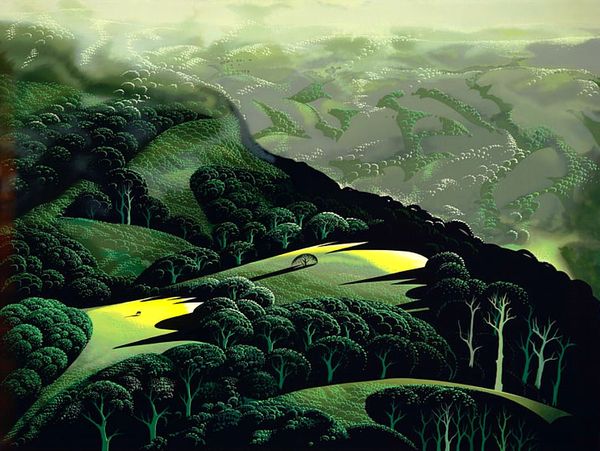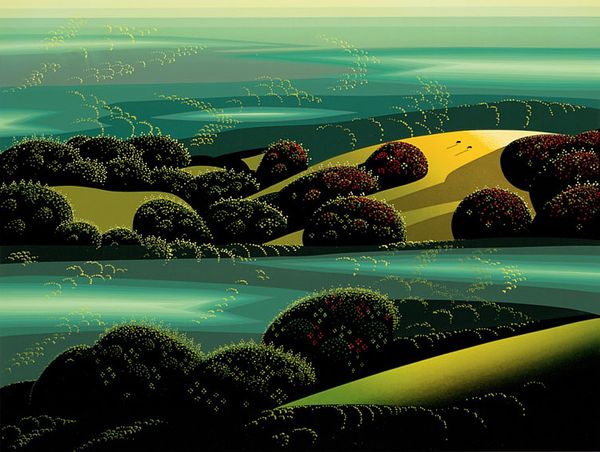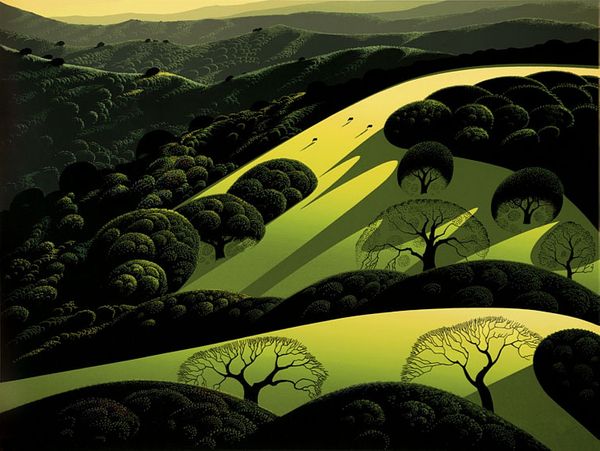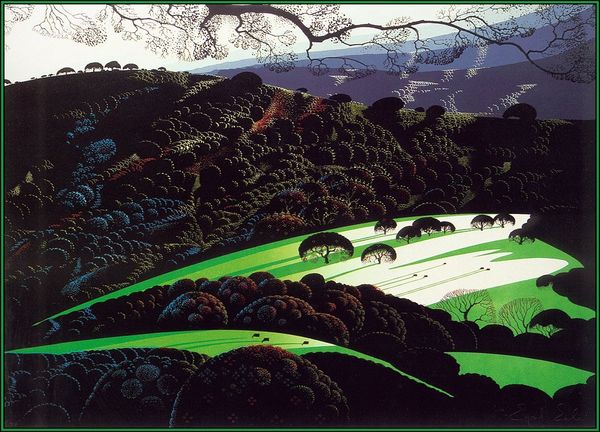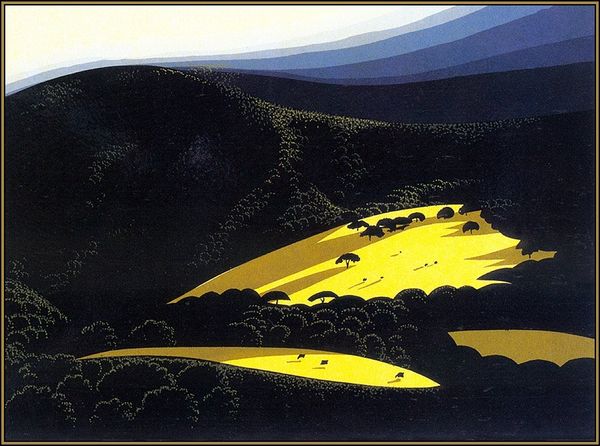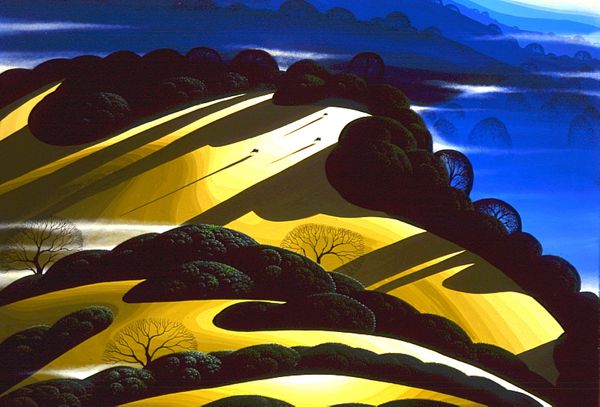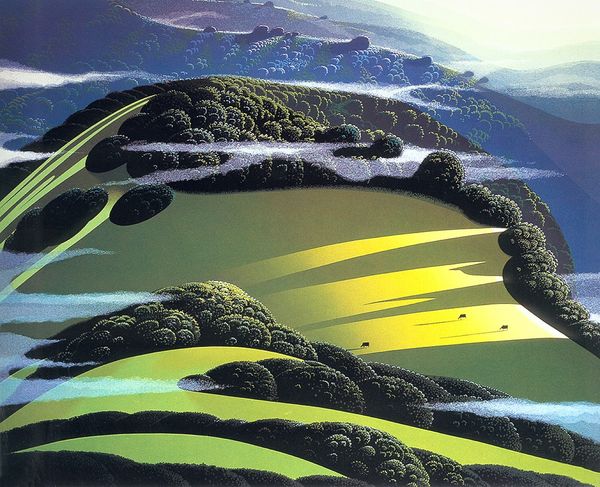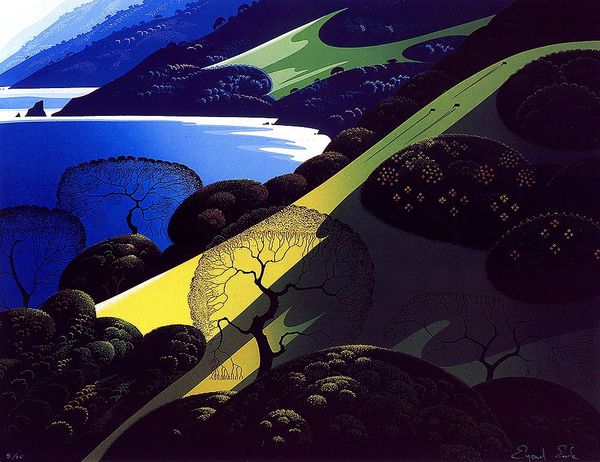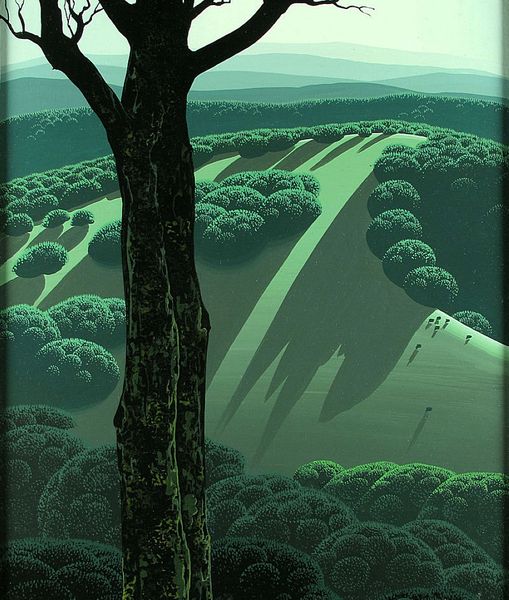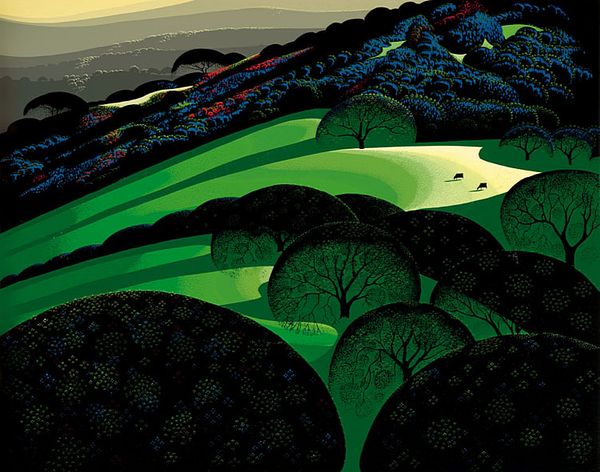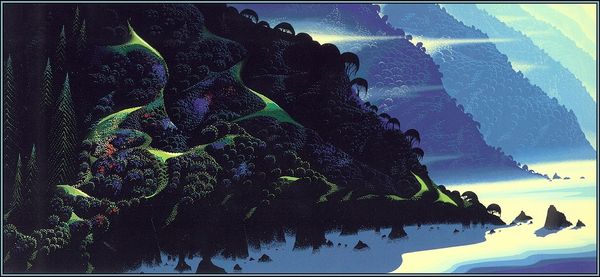
Copyright: Eyvind Earle,Fair Use
Curator: Today we're looking at Eyvind Earle's "Santa Cruz Mountains," created in 1971. Editor: My immediate response is one of almost unsettling tranquility. There's a stillness achieved through the geometric shapes and limited color palette. It's very calculated. Curator: The color, I agree, plays a significant role. The almost monochromatic gold washes the landscape, creating a sense of… timelessness, perhaps? It lacks the typical dynamism we find in plein-air paintings. Editor: Absolutely. Gold traditionally symbolizes divinity, wealth, and even enlightenment. To saturate this landscape with it... It speaks of an almost sanctified natural space. The Santa Cruz Mountains, thus, aren't merely depicted; they're elevated to an idealized, almost mythical realm. Curator: But look closer at the structure. The composition relies on repeated lines and carefully placed shapes to guide the viewer's eye. Notice how the dark clusters of trees are strategically placed to create a rhythmic pattern? It almost feels stylized, even artificial. Editor: The stylized depiction lends itself to seeing the landscape as a symbol rather than a literal place. Mountains, after all, in many cultures, are associated with strength, endurance, and a connection between the earthly and the divine. Earle is tapping into a well-established visual language. Curator: The reduction of the mountains into these tiered shapes suggests a kind of order imposed upon nature. It almost reads as an exploration of the ideal versus the real; the imposition of constructed order on something that's naturally chaotic and complex. Editor: I think that order also reinforces that idealized vision, which transcends mere topographical representation. These aren’t just mountains; they are visual metaphors layered with meaning and historical weight. Curator: It is interesting how the application of a consistent filter reshapes your perception, even understanding, of a physical location. Editor: Precisely, and seeing this with your eyes helps me more clearly see the significance of such representations.
Comments
No comments
Be the first to comment and join the conversation on the ultimate creative platform.
